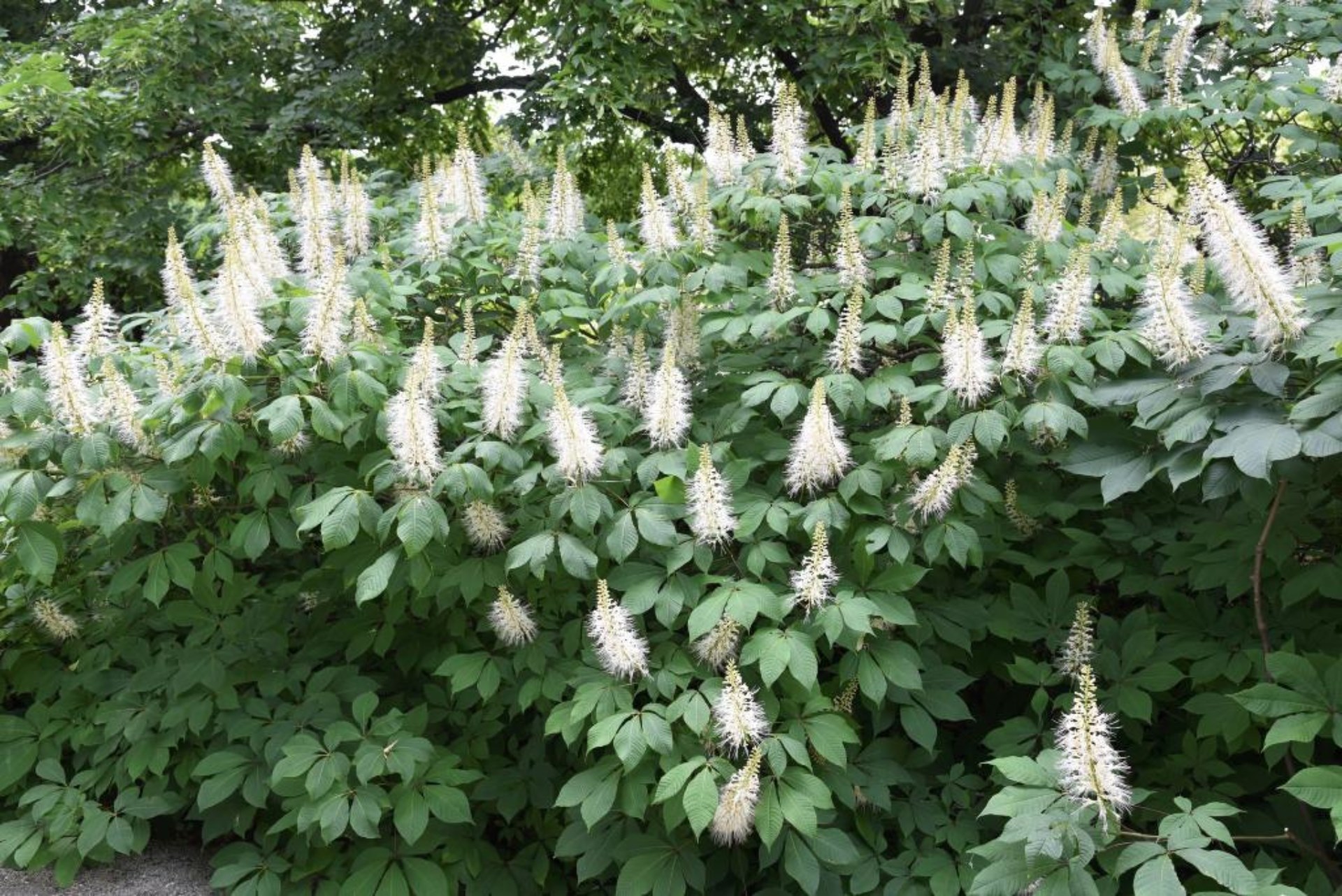919-552-8286
sales@adcocksnursery.com

Grows 8' - 12' ht. x 8' - 15' sp.
This variety of Buckeye, originally from Alabama, is a fantastic late-blooming shade bush with large and abundant white flowers that tend to droop because of their size. A larger bush than the regular Bottlebrush Buckeye, it blooms later in the summer, and is a great native addition to any garden and will adapt to a range of conditions from full sun to moderate shade. A good summer source of food for butterflies and moths.
Like its cousin, the Bottlebush, it does not require pruning to maintain its shape, but it will tolerate heavy pruning several inches above the ground for rejuvenation.
Makes a great companion plant to Witch Hazels and Hydrangea, especially with its yellow fall leaf color. Also works well as a background for perennial and annual flower beds.
Photo Credit:

White Flowers/Native
Small deciduous tree. In early summer, it grows masses of spectacular 6-24" long upright panicles of white flowers are borne atop the rich, dark green foliage. The plant has a broad-rounded habit, lending itself to mass plantings. It adapts to a range of light conditions from full sun to moderate shade. It does not require pruning to maintain its shape, although it tolerates heavy pruning several inches above the ground for rejuvenation. Though it does have a suckering nature, it is not considered invasive. Makes a great companion plant to Witch Hazels and Hydrangea. Also works well as a background for perennial and annual flower beds. Attracts butterflies. Yellow fall color. Native plant.
Photo Credit: The Morton Arboretum; The JC Raulston Arboretum

Grows to 10-20' ht & sp
Red flowers, native tree. Round-topped shrub to small tree. Can reach 30-36' in height and spread in the wild. Produces red flowers 4-8" long, 1.5-3" wide panicles, in April-May. Red Buckeye has the first red tubular flowers to bloom in spring, making it very important to returning hummingbirds and the first butterflies. It is normal for this plant to drop most of its leaves by the end of summer, so place it in a site where it is highly visible in the spring, but less noticeable after leaf drop. Likes moist, acidic soil and prefers part shade. WARNING: the seeds, which look like chestnuts and young shoots are poisonous if eaten.
Photo Credit: The JC Raulston Arboretum